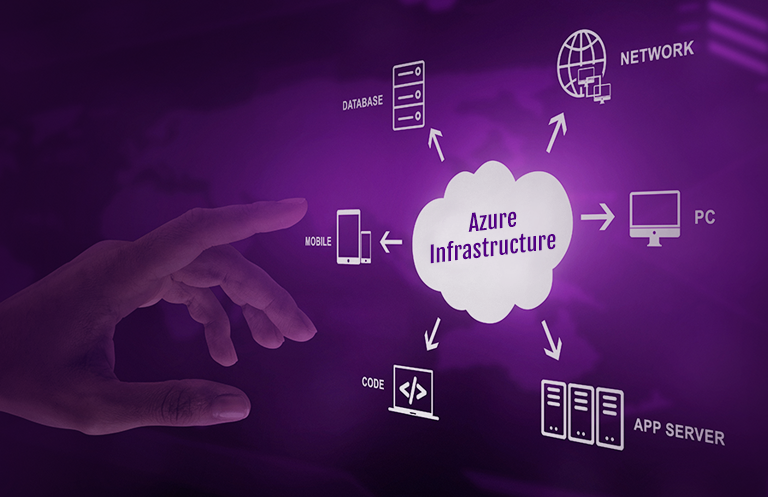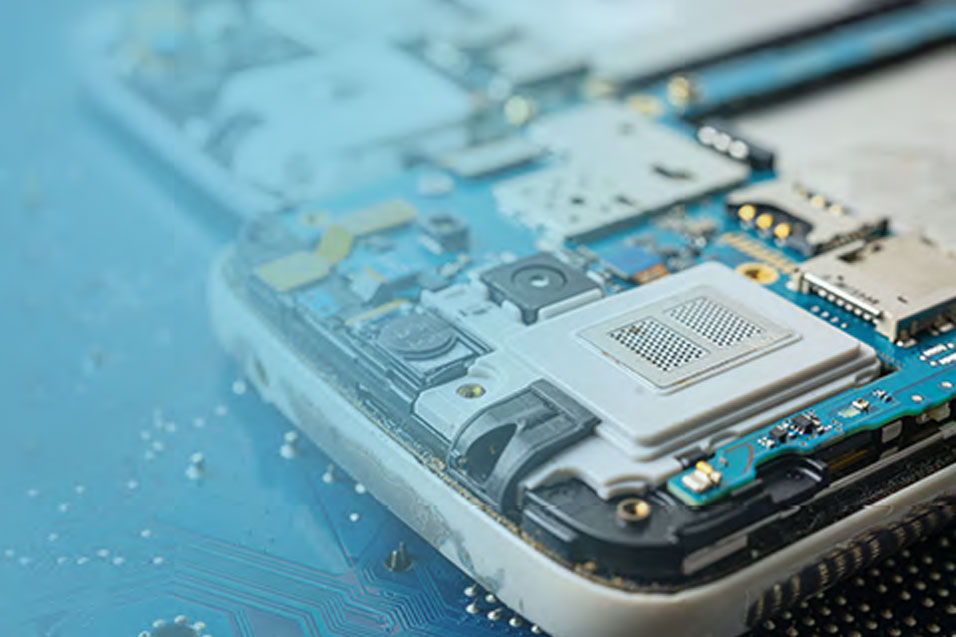As per Gartner Research, over 25 Billion connected things will be in use by 2021. IoT communication protocols has a key role to play in it. IoT protocols are the modes of communication that ensure the security of the data being exchanged between the connected devices.
Different sets of IoT protocols are used to meet different needs of each connection. The choice of the protocol must consider a whole array of requirements, depending on the function of the connected device, the communication protocol at each layer varies. Let us look at some of key IoT protocols used today across range of industry applications.
What is IoT Protocol?
IoT Protocols is the invisible language that allows communication between sensors, gateways, physical devices, and end user applications. It enables exchanging of data in a very structured, secure, and seamless manner.
The IoT protocol is such a system, which allows transferring the data over wired and/or wireless mediums. It ensures transfer of data between devices over a safe and secure communication network.
Adoption of IoT protocols
“The IoT communication protocol market is expected to grow from $11.44 billion in 2015 to reach $15.80 billion by 2022, at a CAGR of 4.66%” as per Markets&Markets research.
The key factors driving this growth include increasing need of connected living (smart gadgets, wearables), rise of IoT powered applications across industries, improve operations efficiency, growing adoption of cloud platforms, government focus in building smart & connected infrastructure.
Some of the key IoT Protocols
1. MQTT – Message Queuing Telemetry Transport
Message Queue Telemetry Transport (MQTT) is an ISO- approved message protocol. It was developed in 1999 by Andy Stanford-Clark (IBM) and Arlen Nipper (Arcom). MQTT previously known as “SCADA Protocol” is an easy to implement messaging protocol, which is mostly used for monitoring from a remote communication area in IOT where the bandwidth is limited.
This protocol enables low power consumption that is why it is known to be lightweight or easy to implement messaging protocol. It collects the data from number of electrical devices and distributes the data via its minimized packet form, which makes it a good choice for IIOT and mobile applications.
The core three mechanisms of this protocol are-Subscriber, Publisher and Broker. The task of the publisher is to generate the data and transmit it to the subscriber by using the help of Broker, which also ensures the security part by checking the authorization of the subscribers and publishers.
Use Case
- Sensor based Smart Parking to detect the number and location of empty or vacant parking spot
Benefits
- Lightweight for constrained networks
- Easy to implement
- Increased scalability
2. AMQP – Advanced Message Queuing Protocol
Advanced Message Queuing Protocol (AMQP) is an open standard application layer protocol originated in year 2003. The major specifications of this protocol features it as message oriented, routing, queuing, reliability and security. The protocol is mainly designed for middleware environment. The Main three components of this protocol are – Exchange, Message Queue, and Binding.
The mechanism of Exchange is to collect the message and arrange them all in a queue. The Message queue stores the message and all the information until they are developed by the client app safely. Where the binding component helps to state the connection between the exchange and the message queue component.
The AMQP protocol enables the benefits of its robust communication model, which can guarantee the complete transactions between these components. Because of this protocol’s heaviness it is not so suitable for sensor devices due to its limited memory and power bandwidth etc.
Use Cases
- AMQP protocol is being used to connect hundreds of critical systems to monitor and share updated globally in the Industries like Telecommunications, Defense, Manufacturing, Internet and Cloud Computing, and many additional market segments.
Benefits
- Reliability of message delivery
- High speed message delivery
- Message Acceptance
3. Wi-FI
The widespread Wi-Fi is based on the standard 802.11. This wireless protocol has the ability to transfer hundreds of megabits per second. It ranges approximately up to 50 m whereas for fixed stations it may vary.
The Wi-Fi operates on specific frequencies ranges between 2.5 GHz to 5.8 GHz channels with a transfer rate of 40 Mbps. This wireless protocol can be emerging with a low energy consumption and the only drawback is that it may consume excessive energy/ power for some of the IoT application.
Use cases
- Passenger Flow and Wait Time Monitoring at an Airport
- Prevention and Investigation of Vandalism
- Traffic Flow Analysis in Cities
Benefits
- Increased Mobility
- Wider Reach of the Network
- Reduced Cost of Ownership over Time
4. Bluetooth, Bluetooth Low energy (BLE), Bluetooth mesh
Bluetooth low energy is a version of well-known Bluetooth protocol based on the standard IEEE 802.15.1 is one of the most popular and broadly used technologies of short-range, which allows wireless connection of various electronic devices like Smart phone, computer, keyboard, mouse, printer, palmtop, headset etc.
The recently introduced IoT protocol BLE or Bluetooth low energy protocol reduces power consumption by transmitting in bursts and is typically used for the devices paired in a star configuration with a data transfer rate of up to 3 Mbps and maximum range of 100 meters. Which simply allows us to connect various devices that are placed in different rooms and even on different floors.
The Bluetooth mesh protocol is a computer mesh-networking standard based on BLE that enables many to many device communications over Bluetooth radio. It is optimized for creating large-scale device networks. Ideally suited for asset tracking, building automation, sensor network, and other IoT solutions that require a number of devices to communicate with one another.
Use Cases
- In manufacturing – predictive maintenance, data analytics etc.
- A Bluetooth mesh networking system allows organisations to monitor, control, and automate their lights.
Benefits
- Lower power consumption
- Easily upgradeable.
- Reduced Cost
5. CoAP – Constrained Application Protocol
The CoAP or Constrained Application Protocol was launched in 2013 by IETF. The protocol was specially created for connecting devices with constrained resources like small memory or short battery life.
CoAP is designed to address the needs of HTTP based IoT systems. It relies on UDP or User Datagram Protocol for establishing secure communication between endpoints. Same as the HTTP Protocol it also uses restful architecture. Some additional extensions have been designed to use with CoAP which offers extra features that can reduce the transfer times and define several CoAP resources as a group.
Use Cases
- Home IoT
- Commercial building IoT (sensing and control)
Benefits
- Long battery life for use in IoT and M2M
- Asynchronous message exchanges
- Simple protocol, uses less overhead due to operation over UDP
RELATED BLOG
6. ZigBee
The ZigBee protocol is based on the standard 802.15.4 which usually operates at a frequency range of 2.4GHz with 250Kbps. ZigBee is a simpler and cheaper alternative of Bluetooth as this protocol is specially designed to consume low power and low throughputs which makes it a better replacement.
Despite its limitations of short-range and low data rates it can be used for both consumer and industrial applications. The installation and maintenance is easy for this protocol as it is based on the self-assembly and self-healing grid topology. It is also a scalable solution along with the high node counts.
Use Cases
- ZigBee based gateway to connect home products.
Benefits
- Consumes Low Power
- Scalable Network
- Low cost / long lasting batteries
7. IPv6
IPV6 (Internet Layer Protocol) was developed by the IETF in the year 1998. It is the most recent version of the Internet Protocol or Communication Protocol. It identifies the devices, like locating the computers or any other device that uses the internet can be located through its own IP address.
Use Cases
- Next-generation home networking from security system, lighting to smart kitchen applications like oven, dishwasher and so on
- IPv6 over Bluetooth Smart enabling standalone wearables
Benefits
- Efficient Routing and efficient packet processing
- Simplified network configuration
- Directed Data Flows
8. 6LoWPAN
The 6LoWPAN Protocol is an acronym of IPv6 over Low power wireless PAN. The Protocol is an IP based IPv6 networking protocol that allows being used with the 802.15.4 wireless network, a standard which was developed by IEEE in the year 1998. The protocol gives IoT connectivity to low power devices. Which operates only in the frequency range of 2.4 GHz with a 250 Kbps transfer rate.
Use Cases
- Battery powered sensors for Example temp, smoke, etc.
- Main powered appliances (washing machine)
- Wi-Fi access points as Border Router / Gateways
Benefits
- Low data rates
- Low Power/Energy
- Ideal to create mesh networks
9. Sigfox/ LWM2M
The Sigfox Protocol was launched in the year 2014 by Open Mobile Alliance (now OMA Spec Works). The protocol is specially designed to meet the requirements for the comprehensive handling of resource-constrained devices so that it can only send the data of a low level. The Sigfox Protocol is very popular because it is one of the best alternative technologies, which bear the attributes of both cellular and Wi-Fi.
Use Case
- Use in Smart Home Alarm System as back-up communication channel.
- In Smart Parking Lots for better monitoring of parking spots available.
Benefits
- Low power consumption
- Ideal for low cost and more constrained devices
- Provides secure communications between client and server using DTLS
10. LPWAN
The wireless network Low Power Wide Area Network (LPWAN) is designed to allow long-distance communication or data transmission between the connected devices while having a low power consumption. The data range of this protocol ranges from 0.3 Kbit/s to 50 Kbit/s per channel.
NB-IoT- NarrowBand-Internet of Things is a standard based on low power wide area (LPWA) developed to enable range of IoT devices with efficient power consumption, system capacity and spectrum efficiency significantly. Battery life of more than 10 years can be supported for various use cases.
Use Case
- Narrowband-IoT-based (NB-IoT-based) asset tracking solution
- The LPWAN protocol provides the communications infrastructure for remote asset’s condition monitoring including temperature, vibration, pressure, and other health parameters
Benefits
- Low power usage
- Low cost / long lasting batteries
- Long distance communications
Conclusion
There are newer and newer applications coming every day and their use cases cropping up within the IoT industry every day, the IoT protocols for their deployment will continue to emerge along the way. It should be emphasized that the safe, secure, and effective management of the device is the keystone of the sustainable development of IoT networks worldwide.
Leveraging its expertise in smart & connected product engineering, eInfochips helps global players in developing IoT applications with enabling range of IoT communication protocols right from protocol stack integration, multi-protocol gateway design, protocol porting, to testing & certification. For more information, please connect us today.













